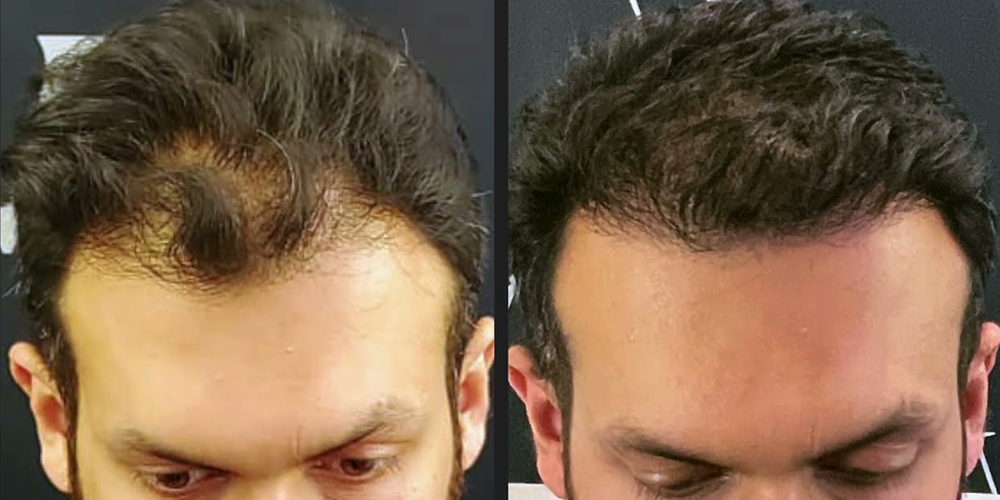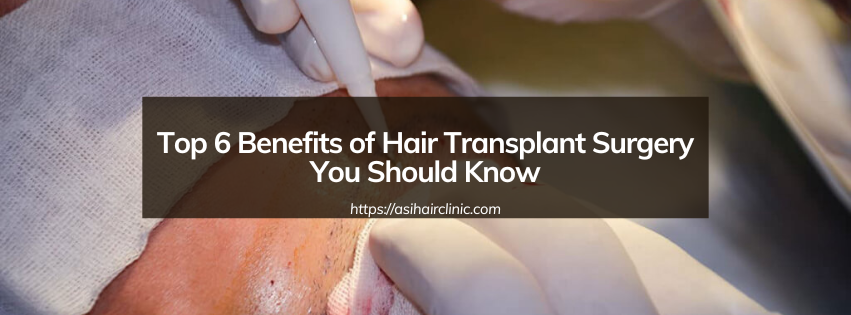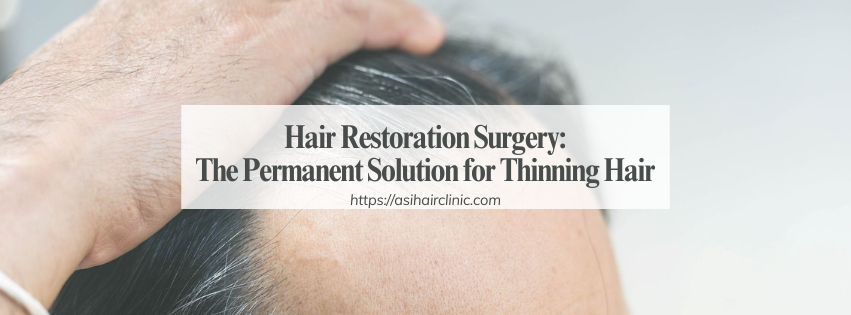Hair Transplant in Winter
Hair loss can be a distressing experience, affecting individuals' self-esteem and confidence. Fortunately, with advancements in medical technology, hair transplant surgery has emerged as a viable and effective solution for restoring a healthy, natural-looking head of hair. While hair transplants can be performed year-round, many individuals wonder if winter is an optimal time to undergo this procedure. This comprehensive guide delves into the benefits of opting for a hair transplant during the winter months, shedding light on the advantages, potential concerns, and factors to consider before making a decision.
1. The Appeal of Winter Hair Transplants
Winter offers a unique set of advantages for individuals considering a hair transplant. The cooler temperatures, reduced sun exposure, and the overall environment present several benefits that can enhance the recovery process and the final outcome of the procedure. Understanding these elements can help prospective patients make informed decisions about their hair restoration journey.
1.1. Cooler Temperatures and Reduced Sun Exposure
One of the most significant benefits of undergoing a hair transplant in winter is the cooler weather. The scalp and the transplanted grafts are more comfortable in lower temperatures. Excessive heat and sun exposure can increase the risk of complications, such as swelling, inflammation, and scabbing.
During winter, the reduced sun exposure minimizes these risks, promoting faster healing and reduced discomfort. The cooler weather can also aid in managing post-operative swelling, which is a common occurrence after a hair transplant. When the body is subjected to high temperatures, its natural cooling mechanisms can become stressed, potentially prolonging swelling and hindering recovery. In stark contrast, the milder conditions of winter provide an excellent setting for optimal healing, allowing patients to focus on their recovery without unnecessary interruptions.
Moreover, protecting the new grafts from direct sunlight soon after the transplant is crucial. Winter provides an ideal backdrop since patients can cover their heads without fear of sunburn or prolonged UV exposure, which can adversely affect the healing process. By choosing winter for a hair transplant, individuals can leverage the season's characteristics to support their overall recovery.
1.2. Reduced Sweat and Sebum Production
The cooler temperatures of winter typically lead to a decrease in sweat and sebum (oil) production. This is advantageous for individuals undergoing a hair transplant because excessive sweat and oil can irritate the transplanted grafts and impede the healing process.
With reduced perspiration and oil production, the scalp creates a more hygienic environment for the transplanted area, minimizing the risk of infection and promoting a smoother recovery. Patients often find that maintaining cleanliness is easier during winter, reducing the need for frequent washing and minimizing the mechanical stress on the freshly implanted follicles.
Furthermore, the winter air can have varying moisture levels, and while it may be drier in some regions, the chilly temperatures discourage the overproduction of oils that can lead to clogged follicles. By having a more balanced scalp environment, patients can rest assured knowing they are giving their transplanted hair the best chance to thrive.

1.3. Convenient Recovery Time
Winter often coincides with holidays and breaks for many people, making it a convenient time for scheduling a hair transplant procedure. Many individuals may have more time to recover and recuperate, free from the pressures of work, social obligations, or outdoor activities.
With shorter daylight hours and less demanding social schedules, winter creates an opportunity for individuals to focus solely on healing and properly caring for the transplanted area. Taking time off work during the holiday season often aligns with these procedures, allowing patients to dedicate themselves to the healing process without distractions.
Moreover, the mindset during winter is often more introspective and home-oriented, making it easier for patients to embrace the necessary downtime. This mental space can be beneficial, providing the emotional bandwidth to manage expectations and engage actively in post-operative care. It allows individuals to be patient with their recovery, understanding that results take time and dedication.
1.4. Protection from Harsh Elements
Another advantage of undergoing a hair transplant in winter is the natural protection provided by the cold weather against harsh environmental elements. After a hair transplant, it's essential to keep the treated area safe from wind, rain, and excessive sun exposure.
The colder temperatures serve as a buffer against these potential irritants, easing the burden on newly transplanted grafts. Wearing hats or scarves during this season not only adds a layer of warmth but also acts as a protective barrier against environmental factors that could disturb the delicate healing process.
Additionally, certain winter accessories can also offer added comfort. For instance, soft, breathable fabrics can prevent irritation while keeping the scalp warm. It’s important for patients to choose styles that do not apply pressure to the grafted areas, ensuring they remain protected while still looking fashionable.
1.5. Reduced Risk of Infection
The cooler temperatures and lower humidity levels associated with winter contribute to a less conducive environment for bacterial growth. This aspect plays a crucial role in the success of a hair transplant procedure, as infection can significantly hinder recovery and outcomes.
The winter climate can generally reduce the likelihood of infections, especially when patients adhere to proper hygiene practices. This means that following post-operative instructions becomes even more critical, as the winter conditions can complement efforts to maintain a clean and healthy scalp.
When patients are diligent about their aftercare, including regular but gentle cleaning and avoiding contact with unwashed hands or surfaces, they further mitigate the risk of infection. Practicing good hygiene habits becomes paramount in the success of the procedure, promoting quicker recovery times and improved results.
2. Addressing Potential Concerns
While winter offers several advantages for hair transplants, it's important to be aware of potential concerns that might arise during this season. From travel logistics to scalp care, being prepared ensures a smoother process and successful outcomes.
2.1. Travel and Weather Conditions
For individuals planning a hair transplant during winter, adverse weather conditions can pose challenges for travel to and from the clinic. Snow, ice storms, and other weather-related disruptions can complicate logistics, particularly for those residing in areas prone to harsh winter climates.
Planning for potential travel difficulties is essential. Patients should consider their local weather forecasts and allow ample time for getting to appointments, both pre- and post-surgery. It may also be wise to discuss contingency plans with the surgical team in case of unexpected delays that could impact the procedure. Being proactive in managing travel arrangements can alleviate stress and ensure a seamless experience.
Additionally, patients should prepare for any possible health implications related to winter weather. In some cases, the cold can exacerbate existing health issues, such as respiratory problems. Individuals must communicate openly with their surgeon about any underlying conditions that may affect their ability to travel safely during winter months.

2.2. Staying Hydrated
Maintaining adequate hydration is crucial throughout the hair transplant healing process, especially in winter when the air can be dry and dehydrating. The body's tendency to lose moisture can impact skin health, including the scalp, leading to dryness that may hinder recovery.
Patients should pay close attention to their water intake, ensuring they consume enough fluids daily. Incorporating hydrating foods like fruits and vegetables into their diet can also support skin and scalp health. Additionally, using humidifiers can combat dry indoor air, creating a more favorable environment for healing.
Staying hydrated is not just about drinking water; it’s also about maintaining the right balance of electrolytes and nutrients. Proper nutrition can play a pivotal role in enhancing the healing process and supporting overall well-being, making it all the more important to prioritize hydration.
2.3. Managing Scalp Care
During the winter months, maintaining a healthy scalp environment is vital, particularly after a hair transplant. While the reduced sweating and sebum production can be beneficial, it remains essential to follow the surgeon's instructions for proper washing, cleaning, and care of the transplanted area.
Using appropriate shampoos and avoiding harsh chemicals is critical in supporting the healing process. Patients should seek out products designed for sensitive scalps, focusing on those that are fragrance-free and contain gentle moisturizing ingredients. Avoiding aggressive cleansing routines helps protect the grafts while promoting better healing.
In addition to product choices, it is important for patients to establish a gentle routine when caring for their scalp. Limiting the use of heated styling tools and opting for air-drying methods can mitigate excess damage to the transplanted hair, ensuring that it remains intact during the crucial early months of growth.
3. Preparing for Your Winter Hair Transplant
To ensure a successful and comfortable winter hair transplant experience, careful preparation is crucial. Following a well-defined plan can ease anxiety and streamline the process, making everything more manageable for prospective patients.
3.1. Consult with a Specialist
Begin by scheduling a consultation with a qualified and experienced hair restoration surgeon. During this appointment, it’s an opportunity to discuss your specific hair loss concerns, medical history, and expectations from the procedure.
Assessing your hair type, scalp condition, and determining suitability for a hair transplant is part of the evaluation. The surgeon should conduct a thorough analysis, helping you understand what can realistically be achieved through the procedure. Establishing clear communication with the specialist can pave the way for a positive surgical journey.
Asking detailed questions regarding the process can provide clarity on what to expect. Understanding the techniques used, such as Follicular Unit Extraction (FUE) or Follicular Unit Transplantation (FUT), gives insight into the intricacies of the surgery and what will best suit your needs.
3.2. Understand the Procedure and Aftercare
During your consultation, your surgeon will explain the hair transplant procedure in detail. It's important to grasp the steps involved, including the duration of the surgery and the necessary post-operative care instructions.
Understanding the timeline of the procedure can help set realistic expectations. Knowing that full results may take several months allows for mental preparation and patience during the wait. Embracing this perspective is essential in cultivating a positive attitude toward the healing process.
Aftercare is equally vital for achieving optimal results. The surgeon may provide guidelines on washing, protecting the scalp, and managing any discomfort. Following these instructions is critical for a successful outcome, and patients should not hesitate to clarify anything that seems unclear during this discussion.

3.3. Pre-operative Instructions
Your surgeon will provide detailed instructions on how to prepare for the surgery. These may include dietary adjustments, medications to avoid, and specific hygiene measures to follow prior to the procedure. Adhering to these instructions is crucial for a smooth and safe surgical experience.
For example, avoiding blood thinners or certain supplements can minimize the risk of excessive bleeding during the surgery. Knowing which medications to refrain from taking ahead of time can make a significant difference in the overall experience and results.
Patients should also prepare mentally for the day of the procedure. Arriving at the clinic with a calm mindset can promote a more relaxed atmosphere, allowing for better communication and cooperation with the medical team.
3.4. Plan for Recovery
Planning your recovery time in advance is essential. If you have a demanding job or social commitments, consider taking some time off work or postponing social events during the recovery period. Ensure you have a comfortable and supportive environment for healing.
Recovery is not just about physical healing; it also involves emotional readiness. Ensuring that there is a supportive network of family or friends can help foster a conducive environment for rehabilitation, allowing you to focus on regaining your confidence.
Additionally, allocating time to educate yourself about the healing process can empower you to make informed choices about your post-operative care. Knowing the signs of potential complications can help you address any concerns swiftly, ensuring the best possible outcome.
3.5. Prepare a Post-operative Kit
While your surgeon will provide specific instructions regarding post-operative care, it's helpful to assemble a kit with essential items beforehand. This may include gentle shampoos and cleansers, pain relievers, soft bandages, and ice packs to manage swelling and discomfort.
Being ready with these supplies can alleviate stress immediately following the procedure. Having everything organized ensures that you won’t need to venture out into the cold until you’re comfortable doing so, allowing for a more peaceful recovery experience.
This preparation also reflects a proactive approach to recovery. The more equipped you are, the more empowered you'll feel as you navigate this transformative journey.
3.6. Manage Expectations
Realistic expectations are vital for a successful hair transplant outcome. Understand that it may take several months for the transplanted hair to fully grow in, and the final results may not be visible immediately.
Be prepared for the progression of the healing process; it’s essential to maintain a positive attitude throughout the journey. Recognizing that hair growth is gradual and varies from person to person can help mitigate disappointments along the way.
Engaging in forums and support groups where others share their experiences can be beneficial, reminding you that this journey is a shared one. Surrounding yourself with positivity can bolster your spirits and reinforce your commitment to the long-term vision of a fuller head of hair.
Conclusion
Hair transplant surgery in winter can be an advantageous option for many individuals seeking hair restoration. The cooler temperatures, reduced sun exposure, and less demanding social schedules create a conducive environment for healing and recovery. While some potential concerns must be addressed, careful planning, diligent preparation, and following the surgeon's instructions can significantly contribute to a positive outcome. Embrace the journey with confidence and look forward to the renewed sense of self that comes with restored hair.
LATEST POSTS








